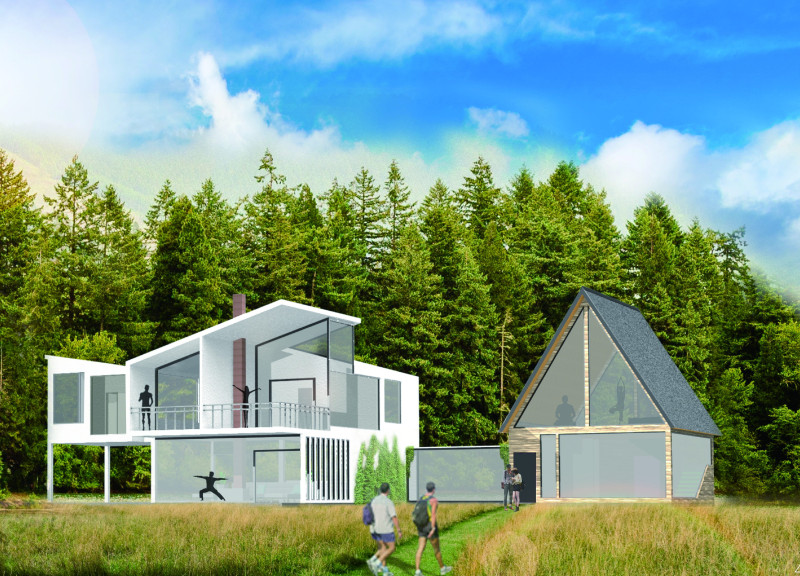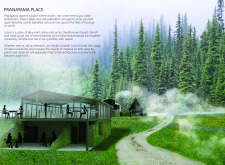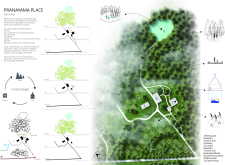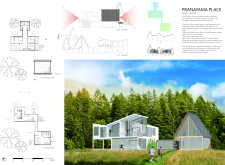5 key facts about this project
The architecture serves multiple functions, including providing a guest house, a communal space for gatherings, and areas dedicated to wellness activities. Each component of the design is carefully considered to enhance the overall purpose of the retreat, which is to foster calmness and introspection. The use of natural materials and local resources plays a critical role, promoting sustainability and minimizing environmental impact.
The guest house features a spacious layout designed for comfort and interaction among guests. Here, large windows invite natural light and frame views of the lush landscape, emphasizing a seamless connection to the environment. The communal areas within the guest house encourage socialization and collective experiences while maintaining a warm and welcoming atmosphere. These spaces may serve for group activities, including meditation sessions, workshops, or simply informal gatherings where visitors can share their experiences.
A defining feature of Pranayama Place is the Stone Barn, which reflects both functional and historical aspects of its location. This structure is primarily designed for social activities, including tea tastings and smaller community events. The use of local stone not only connects the building to its context but also contributes to thermal regulation within the space, making it comfortable year-round. The blend of rustic materials with modern design creates a harmonious aesthetic that promotes a sense of tranquility.
Unique design approaches characterize this project, particularly its commitment to integrating architecture with ecological principles. The architects have focused on the idea of 'recycling nature,' where the built environment is envisioned as an extension of the natural landscape rather than a disruption to it. Pathways through the site are designed to wind gracefully, allowing visitors to explore different garden areas and natural features, enhancing their appreciation of the biodiversity that surrounds them. This deliberate interaction encourages a mindful approach to both nature and architecture.
Furthermore, Pranayama Place embraces the philosophy of Wabi-Sabi, which values the beauty found in imperfection and the transience of materials. This philosophy is manifested in the architectural choices, where the patina of aged materials and the organic shapes of the landscape are celebrated. Each element, from the choice of wood to the texture of stone, reflects a deep respect for the local environment and its characteristics.
Visitors are invited to engage with the architecture and the landscape in a manner that promotes a holistic understanding of their presence within it. The thoughtful arrangement of spaces ensures that comfort and connection are prioritized, enabling individuals to escape from daily distractions and enter a realm of self-discovery and contemplation.
To investigate the intricate details and comprehensive aspects of Pranayama Place, including architectural plans, sections, and designs, readers are encouraged to explore the project presentation further. Understanding the underlying architectural ideas will provide deeper insights into how this project contributes to the discourse on sustainable architecture and nature-centric design.


























